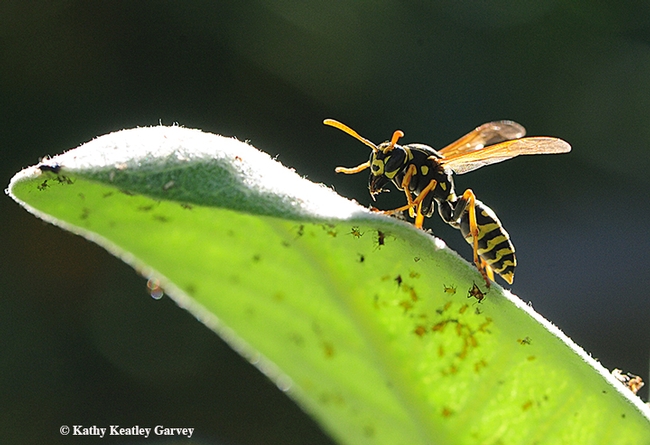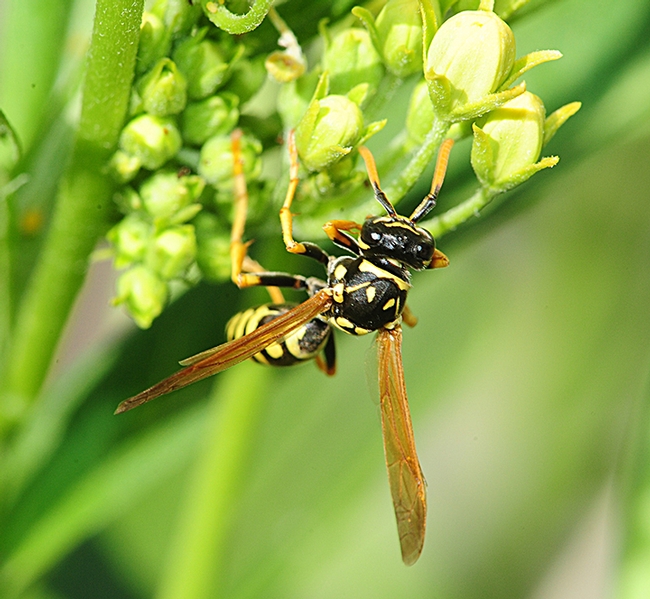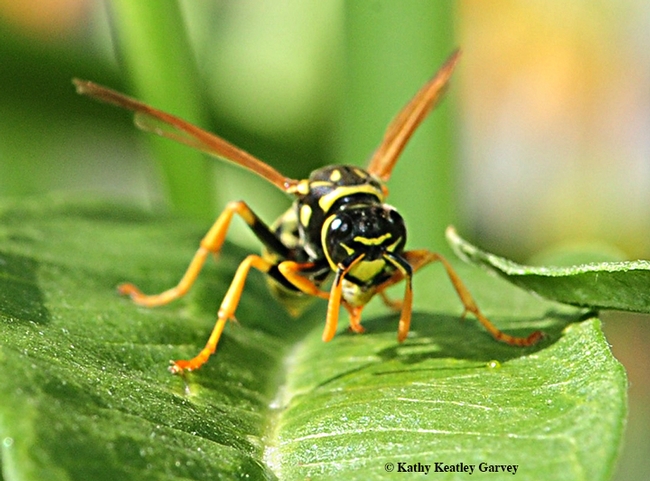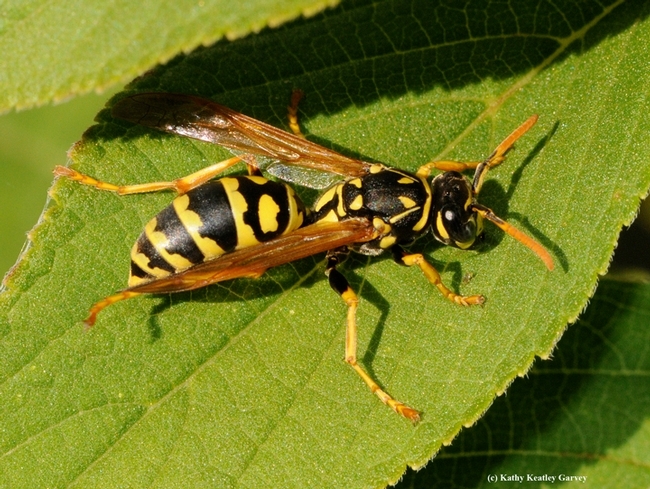Monarch butterflies aren't the only insects that hang around milkweed, their host plant.
You're likely to see a variety of predators, such as the European paper wasp, Polistes dominula.
This paper wasp is a little skittish around paparazzi so it helps to use a long macro lens, like a 105mm or a 200mm, that will allow you to get eye to eye, or nose to antennae.
It's a meat eater, and a voracious one at that. We've seen it shred caterpillars and attack newly emerged butterflies.
Unlike yellow jackets, "European paper wasps are not scavengers," says Lynn Kimsey, director of the Bohart Museum of Entomology and a professor of entomology at UC Davis. "They only take live insects, particularly caterpillars."
Their menu also includes aphids. "For these wasps, meat is meat," Kimsey said. "Aphids are great because you get steak and dessert at the same time."
One of the scientists who studies European paper wasps is Amy Toth of the Department of Ecology, Evolution and Organismal Biology, Iowa State University, Ames, who coined and popularized the Twitter hashtag #wasplove. We've heard her deliver several presentations at the University of California, Davis, and we once asked her to list what she loves about wasps. Her answers are worth repeating! (See more information on a Bug Squad blog)
- They are pollinators
- They contribute to biocontrol of lepidopteran pests in gardens and on decorative plants
- They have been shown to carry yeasts to winemaking grapes that may be important contributors to the fermentation process and wonderful flavors in wine!
- They are the only known insect (Polistes fuscatus) that can recognize each other as individuals by their faces.
- They are devoted mothers that will dote on their young all day long for weeks, defending their families with fury.
- Their social behavior, in my opinion, is the most human-like of any insect. They know each other as individuals, and are great cooperators overall, but there is an undercurrent of selfishness to their behavior,
- They are artists. They make perfect hexagonal nest cells out of paper, which they make themselves out of tree bark + saliva.
- They are extremely intelligent. They're predators, architects, good navigators, and great learners. Among insects, they have large brains, especially the mushroom bodies (learning/memory and cognition area of insect brain).
- They are beautiful, complex, and fascinating creatures!
And to that, we add: European paper wasps are quite photogenic--just don't move around like paparazzi.
Attached Images:

A European paper wasp catching prey on a showy milkweed, Asclepias speciosa. (Photo by Kathy Keatley Garvey)

A European wasp feeding on prey on a tropical milkweed, Asclepias curassavica. (Photo by Kathy Keatley Garvey)

Eye to eye, and nose to antennae with a European paper wasp. (Photo by Kathy Keatley Garvey)

Close-up of European paper wasp. (Photo by Kathy Keatley Garvey)